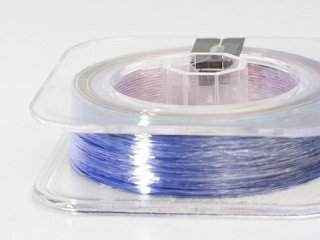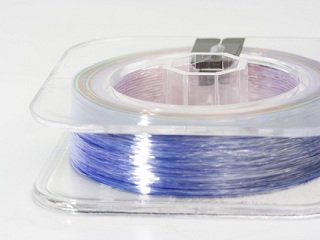 The distance between your arm and the hook on a lure can be pretty far, especially when you consider all of the points in between the two. There’s the spool, the rod guides, the line itself, and then, of course, the knot. I’ve heard it said that “the knot is the weakest link between you and the fish,” but I also believe that it can be one of the strongest links. There’s a lot that goes into fishing knots, however, and today marks the beginning of a series that highlights such an important factor on the water.
The distance between your arm and the hook on a lure can be pretty far, especially when you consider all of the points in between the two. There’s the spool, the rod guides, the line itself, and then, of course, the knot. I’ve heard it said that “the knot is the weakest link between you and the fish,” but I also believe that it can be one of the strongest links. There’s a lot that goes into fishing knots, however, and today marks the beginning of a series that highlights such an important factor on the water.
A crucial facet of fishing knots is knowing which one to tie, which includes consideration of your lure, your line, and basic knowledge on how to tie them effectively. Unbeknownst to many, the act of actually tying the knot and securing it correctly can play a huge role on its strength. Knots tend to fail because of slipping or breaking, and both can be caused by either mismatching a knot with a line type or improperly tying the knot. Cinch or pull at the wrong time and you can severely weaken the line, resulting in breaks and lost fish. Using actual fishing line or even cord, I suggest practicing common knots—improved clinch, Palomar, blood, uni, etc—in your spare time until you can almost tie them with your eyes closed. The practice and repetition will build muscle memory and your fingers will be able to nimbly tie intricate knots easily in no time.
A fishing knot is only as strong as the line used to tie it. Think about that the next time you’re picking up new line for the season. Normally, I’m not a snob when it comes to tackle, and I like to think I’m not one when it comes to line, but I do encourage anglers to seek out quality, reliable line. These qualities are not always synonymous with a high price tag. High quality lines will be correctly and clearly labeled with important characteristics like pound-test ratings and line diameter.
Buying premium line isn’t enough, however. You also need to make sure you take care of your line, whether it’s on the reel or not. When not in use, store any spare spools of line in a sealed, dry container and place it in a dark, cool place to avoid deterioration. When it comes to the line on your reels, continually inspect and replace it when it shows any signs of wear, damage, or abrasion. Deterioration from extreme sunlight, along with unchecked abrasions and weak points can all lead to line breaks when a fish is on. I think we can all agree that this is at the top of the Least Wanted list.
It’s crazy to think about how much goes into the knots we tie on the water, isn’t it? Ignorance may be bliss, but it doesn’t negate the importance of how you tie knots, which knots you tie, or which line you use. The tips I’ve listed above are just the tip of the iceberg when it comes to knots, though, so be sure to come back for more helpful hints!








